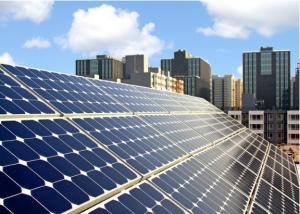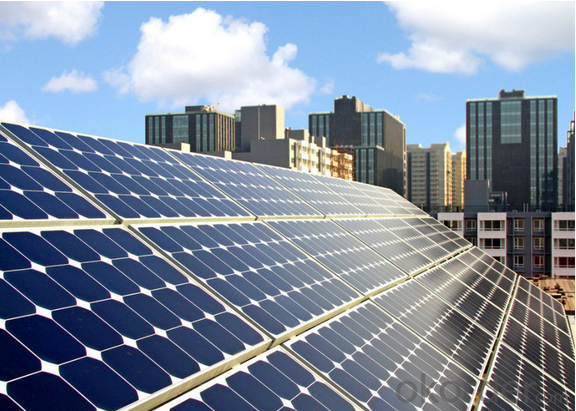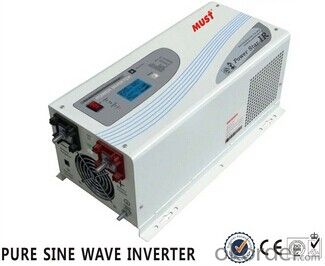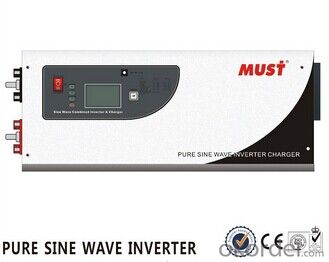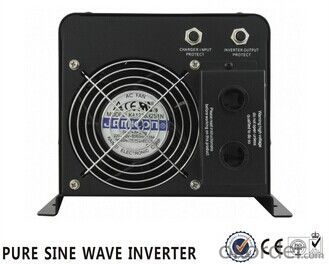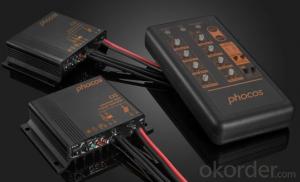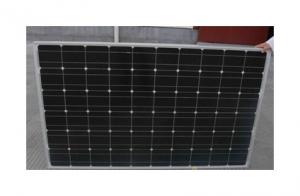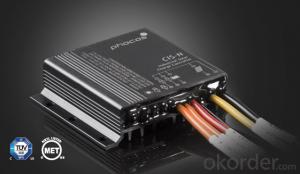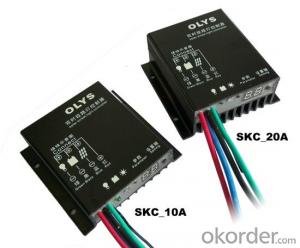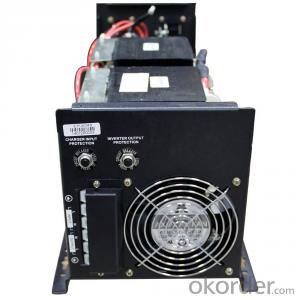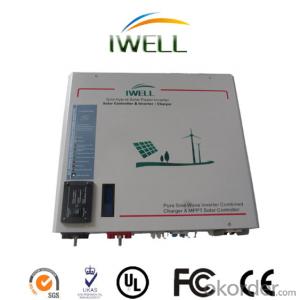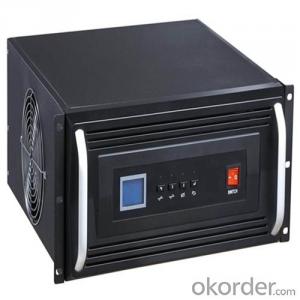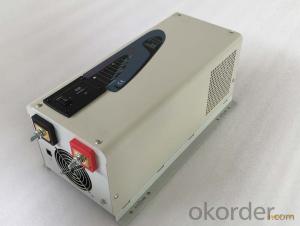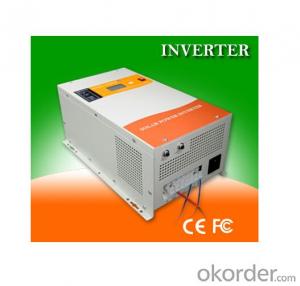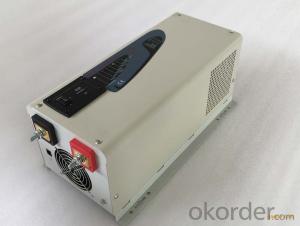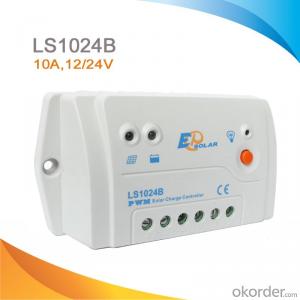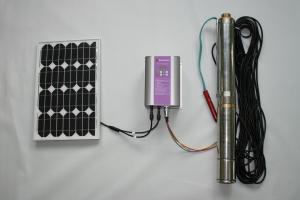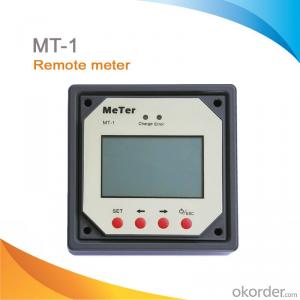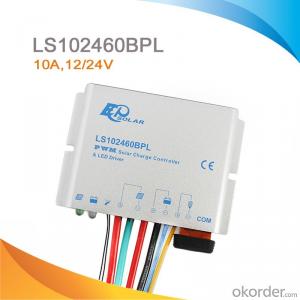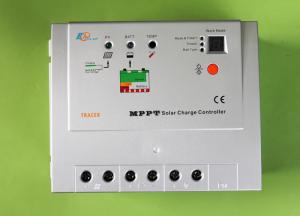Best Rv Solar Controllers - Pure Sine Wave Power Solar Inverter 1000W
- Loading Port:
- Shekou
- Payment Terms:
- TT or LC
- Min Order Qty:
- 100 pc
- Supply Capability:
- 100000 pc/month
OKorder Service Pledge
OKorder Financial Service
You Might Also Like
Product Description
Solar 1000w 1500w 2000w 3000w Pure Sine Wave Inverter 12V 24V 48V to 230V
1.Pure Sine Wave Inverter Features:
1. 1kw-6kw power range,12v / 24v / 48vdc optional,use copper transformer to increase efficiency;
2.165v-260v wide input voltage range ,40-70HZ input frequency;
3.low frequency and pure sine wave which can run inductive loads . main use for home and office: computer, lights, fan,tv, fridge,air-condition .etc;
4. built in 4 steps supper battery charger 30-75A to save charge time.Charger (bulk, absorption, float);
5. with 200cm battery cable;
6. Support generator 1hp/2hp/3hp;
7. Support solar system;
8. Remote control / RS232 , monitor inverter working by computer;
9. CE/ SONCAP certificate;
10. Charge current is adjustable 25%,50%,75%.100%;
11.Hybird solar system , Solar advantage, battery advantage;
NEW FUNCTION :(Solar Priority/Battery Priority Function)
SOLAR HYBIRD INVERTER : Solar Energy , City power , DC to AC can transfer automatically
When battery voltage is low (3 options---10v/10.5v/11v) , it will turn to city power automatically
220V/230V dc/ac pure sine wave best ups solar power inverter generator 1000W 1500W 2000w 3000w 4000w 5000w 6000w solar inverter
2. Pure Sine Wave Inverter Specification
| Model | EP3000 Series | 1000 | 2000 | 3000 | 3000 | 4000 | 5000 | 6000 |
| Capacity | W | 1000W | 2000W | 3000W | 3000W | 4000W | 5000W | 6000W |
| Battery | DC Voltage (Optional) | 12V | 24V or 12 | 24V | 48V | 48V | 48V | 48V |
| Recharge current | 35+/-5A | 35+/-5A | 45+/-5A | 35+/-5A | 35+/-5A | 40+/-5A | 50+/-5A | |
| 3 - stage charge | Boost CC → Boost CV → Float | |||||||
| Input | Nominal Voltage | 120VAC or 230VAC | ||||||
| voltage trip range | 90v+-4% to 140v+-4% or 184v/154v +-4% to 253v+-4% | |||||||
| Voltage re engage range | 100v+-4% -135v+-4% or 194v/164v+-4% to 243v+-4% | |||||||
| Max input AC voltage | 150VAC or 270VAC | |||||||
| Frequency | 50Hz or 60Hz(Auto detect) | |||||||
| Current | 25 Amps in maximum | |||||||
| Efficiency | 95% | |||||||
| Output | Voltage | 120V or 230V AC ±5% | ||||||
| Wave form | Pure Sine wave | |||||||
| Frequency | 50/60Hz | |||||||
| voltage range | Depends on battery type | |||||||
| Transfer time | ≤5ms | |||||||
| Protection | Overload | 15 mins for 125%, 60s for 150%, 20s for over 150s | ||||||
| Short circuit protection | Fault after 10 secs | |||||||
| Electric Fans | Thermo -controlling | |||||||
| Static Consumption | < 10 Watts | |||||||
| Surroundings | Temperature, humidity | 0-50 °C ,90%, no condensing | ||||||
| Surge rating (10s) | 3000W | 6000W | 9000W | 9000W | 8000W | 10000W | 12000W | |
| capable of starting electric moto | 1HP | 2HP | 3HP | 3HP | 4HP | 5HP | 6HP | |
| Physical | Mount | Horizontal wall mount | ||||||
| Size CM (H x W x D) | 44.2 x 21.8 x 17.9 | 63.0 x 21.8 x 17.9 | ||||||
| Carton CM (H x W x D) | 58.0x32.0x31.0 | 75.5 x32.0x31.0 | ||||||
| N.W ( KGS) | 19 | 21 | 25 | 25 | 35 | 38 | 40 | |
| G.W (KGS) | 21 | 23 | 27 | 27 | 37 | 40 | 42 | |
| Remark | Specification for reference , subject to change without prior notification | |||||||
| We accept order with special specifications | ||||||||
3. Pure Sine Wave Power inverter Packing:
Power inverter 1000W 2000W 3000W 4000W 5000W 6000W Inverters
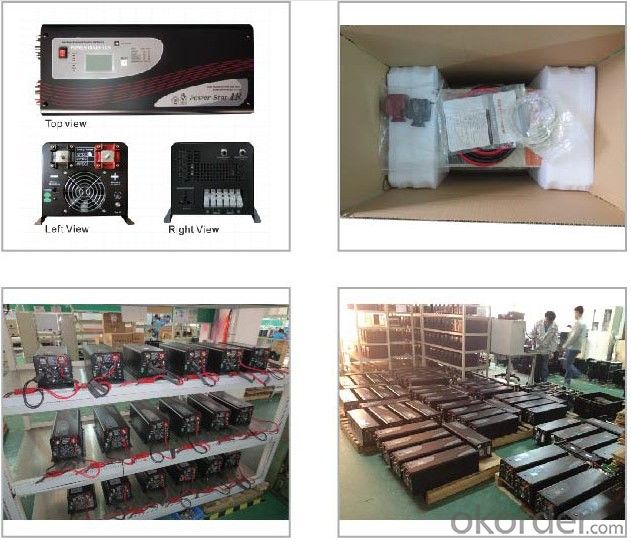
4. EP3000 Pure Sine Wave Solar Power Inverter on the Solar System:
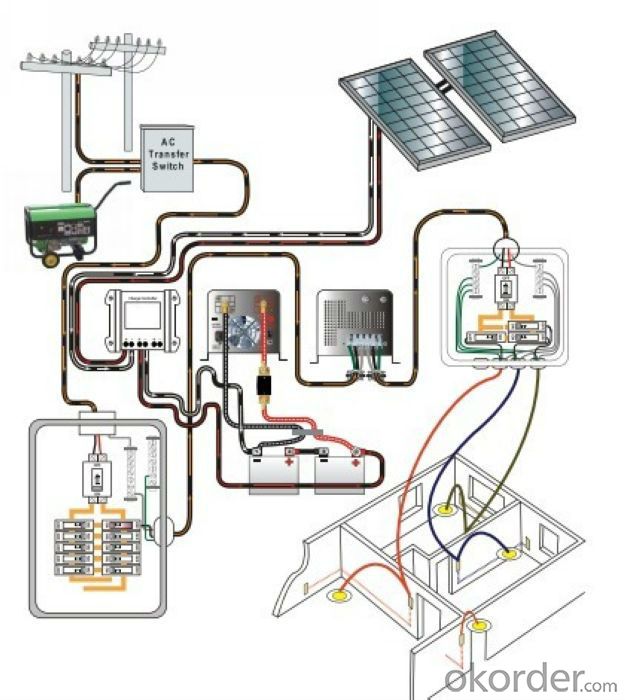
- Q: How does a solar controller handle the protection against electrical surges?
- A solar controller handles protection against electrical surges through the use of surge protection devices. These devices are designed to divert excess voltage caused by surges away from the solar controller and other connected equipment, ensuring their safety and preventing damage.
- Q: Can a solar controller be used with solar-powered research facilities?
- Yes, a solar controller can be used with solar-powered research facilities. A solar controller helps regulate and optimize the charging and discharging of batteries in a solar power system, ensuring efficient utilization of solar energy. This is particularly important for research facilities as it helps maintain a stable and reliable power supply, allowing continuous operation of critical equipment and instruments.
- Q: How do I connect a solar controller to my solar panels?
- To connect a solar controller to your solar panels, follow these steps: 1. Identify the positive and negative terminals on your solar panels. 2. Connect the positive wire from the solar panels to the positive terminal on the solar controller. 3. Connect the negative wire from the solar panels to the negative terminal on the solar controller. 4. Ensure that the connections are secure and tight. 5. Connect the battery terminals to the corresponding positive and negative terminals on the solar controller. 6. Finally, connect the load terminals on the solar controller to the device or system you wish to power using solar energy. Remember to consult the specific instructions provided by the manufacturer of your solar controller for accurate and safe installation.
- Q: Can a solar controller be used in a solar-powered electric go-kart system?
- Yes, a solar controller can be used in a solar-powered electric go-kart system. A solar controller regulates and optimizes the flow of electricity from the solar panels to the battery, ensuring efficient charging and preventing overcharging or damage to the battery. This is essential in a solar-powered electric go-kart system to ensure the proper functioning and longevity of the battery.
- Q: How does a solar controller protect the battery from overcharging?
- A solar controller protects the battery from overcharging by regulating the amount of current flowing from the solar panels to the battery. It constantly monitors the battery voltage and adjusts the charging process accordingly. Once the battery reaches its optimal voltage level, the solar controller limits the charging current to prevent overcharging and potential damage to the battery.
- Q: How do I ensure compliance with local regulations when installing a solar controller?
- To ensure compliance with local regulations when installing a solar controller, it is important to research and familiarize yourself with the specific regulations and codes that apply to your location. This may involve consulting local building codes, electrical codes, and any specific ordinances or permits required for solar installations. Additionally, it is advisable to engage a licensed and experienced solar professional who is well-versed in local regulations. They can ensure that the installation is carried out in accordance with all applicable rules, codes, and safety standards, minimizing any potential compliance issues.
- Q: How do I calculate the size of a solar controller for my system?
- To calculate the size of a solar controller for your system, you need to consider the maximum current and voltage requirements of your solar panels. The solar controller's amp rating should be equal to or higher than the maximum current output of your panels. Additionally, ensure that the voltage rating of the controller matches the voltage of your panels. It is always recommended to consult the manufacturer's specifications and guidelines to ensure compatibility and optimal performance.
- Q: How does a solar controller handle battery state of charge monitoring?
- A solar controller handles battery state of charge monitoring by continuously measuring the voltage and current flowing into and out of the battery. It monitors the battery voltage to determine its state of charge and uses this information to regulate the charging process. Additionally, some advanced solar controllers also incorporate temperature compensation and algorithms to optimize the charging profile and extend battery life.
- Q: How do I integrate a solar controller with an existing solar panel system?
- To integrate a solar controller with an existing solar panel system, you will need to follow a few steps: 1. Determine the compatibility: Firstly, ensure that the solar controller you have is compatible with your existing solar panel system. Check the specifications and requirements of both the solar controller and the solar panels to ensure they can work together. 2. Disconnect the existing connections: Before connecting the solar controller, you need to disconnect the existing connections from the solar panels. This involves turning off the solar panel system and disconnecting any wires or cables attached to the panels. 3. Install the solar controller: Once the existing connections are disconnected, you can proceed to install the solar controller. The installation process may vary depending on the specific model, so refer to the manufacturer's instructions for guidance. Generally, you will need to mount the solar controller in a suitable location near the solar panels and connect the appropriate wires. 4. Connect the solar panels to the controller: After installing the solar controller, reconnect the solar panels to it. This typically involves connecting the positive and negative wires from the solar panels to the corresponding terminals on the solar controller. Ensure that the connections are secure and properly tightened. 5. Reconnect the system: Once the solar panels are connected to the solar controller, you can now reconnect the rest of the system. This includes connecting the wires or cables that were previously disconnected. 6. Test and monitor: After completing the integration, turn on the solar panel system and monitor the performance. Check if the solar controller is functioning properly and regulating the charge from the solar panels effectively. Make any necessary adjustments or settings according to the manufacturer's instructions. It is important to note that if you are unsure or uncomfortable with any of the steps involved, it is recommended to seek professional assistance from a qualified electrician or solar technician. They can help ensure a safe and proper integration of the solar controller with your existing solar panel system.
- Q: Can a solar controller be used with solar panels that are connected to a battery isolator?
- Yes, a solar controller can be used with solar panels that are connected to a battery isolator. A solar controller is designed to regulate the charging of batteries from solar panels, ensuring that they are charged efficiently and safely. When solar panels are connected to a battery isolator, the solar controller can still effectively manage the charging process by controlling the flow of solar power to the batteries. The battery isolator acts as a device that allows power to flow from the solar panels to the batteries while preventing power from flowing back to the solar panels. This setup is commonly used in off-grid solar systems or in situations where multiple battery banks need to be charged simultaneously. By using a solar controller in conjunction with a battery isolator, the solar panels can effectively charge the batteries while protecting them from overcharging or damage.
Send your message to us
Best Rv Solar Controllers - Pure Sine Wave Power Solar Inverter 1000W
- Loading Port:
- Shekou
- Payment Terms:
- TT or LC
- Min Order Qty:
- 100 pc
- Supply Capability:
- 100000 pc/month
OKorder Service Pledge
OKorder Financial Service
Similar products
Hot products
Hot Searches
Related keywords
